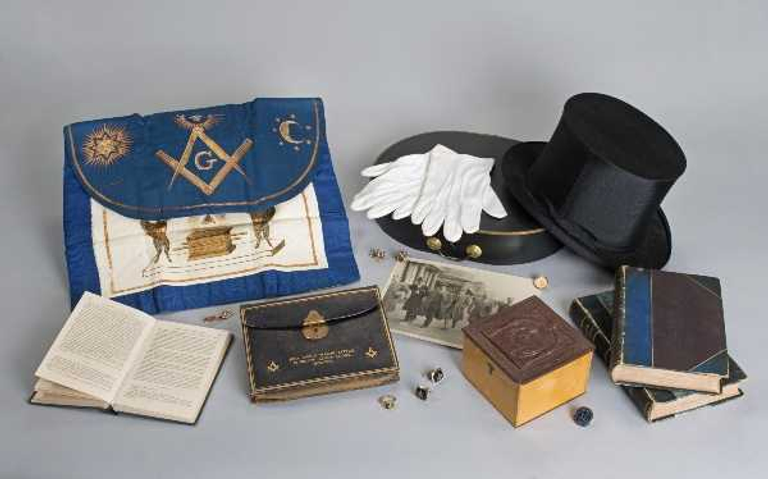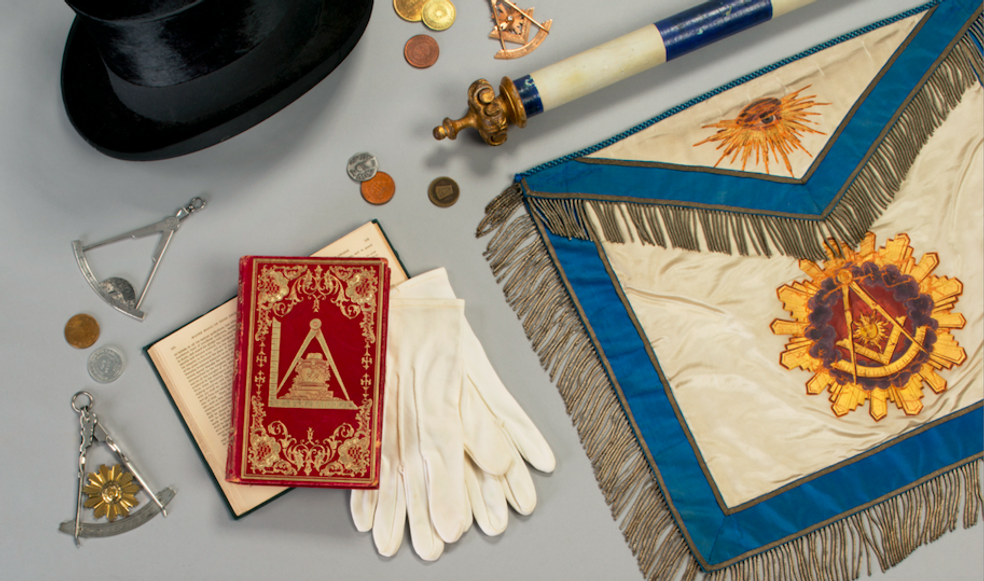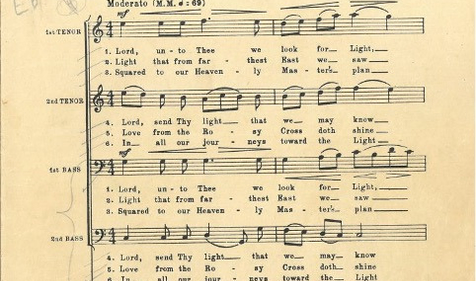The Masonic apron is perhaps the greatest symbol of Masonic tradition and history, serving as a reminder to every Mason their commitment to uphold the values of the Craft.
In a Twitter poll ran by the Supreme Council, 51 percent of respondents revealed they are at least second generation Mason, with a quarter claiming to be a third generation or more. It may only be a sample size of our Brotherhood, but it remains a humbling illustration of the depth Masonic tradition and legacy reaches in some of our families.
Many of us who had a father, uncle and/or grandfather who was also a Freemason still carry items they collected through their own years in the Craft. Artifacts such as watches, rings, pins, Knights swords, and aprons commonly find their way from one generation to the next within the Masonic community. After hearing from some of our Brothers who have been fortunate enough to inherit one artifact or another, we thought it would be appropriate to wind down this month’s spotlight on legacy by examining perhaps the most prominent icon within the Craft: the Masonic apron.

A Masonic apron and other artifacts from the Scottish Rite Masonic Museum & Library
What is a Masonic Apron?
The Masonic apron is perhaps the greatest symbol of Masonic tradition and history, serving as a reminder to every Mason their commitment to uphold the values of the Craft. When the fraternity was established in the 1700s, the founders adopted the tools and traditions of stonemasons, among them the protective aprons they wore as they worked. Masonic aprons have been based on these utilitarian aprons, over time coming to symbolize a Freemason’s labor of building their lives at spiritual temples.
According to one researcher, the original aprons worn by operative masons were made of leather and large enough to cover the wearer from chest to ankles. It wasn’t until the 18th century that the modern, smaller textile aprons came into use. As Freemasonry grew, individuals began to adorn their aprons with symbols of the Craft and ornate ribbons. Over time, the apron evolved from the utilitarian garment of the stonemasons to the symbolic garment worn by Freemasons.

A picture of famous Freemason George Washington alongside a Masonic apron and trowel
The Badge of a Freemason
A new Mason receives a white apron upon joining the Lodge, which is symbolic of the purity and innocence men are expected to pursue in life as a Freemason. As the famous Masonic historian Albert Mackey wrote in the Encyclopedia of Freemasonry, the apron is the first gift a Mason receives, the first symbol explained to him and the first evidence of his commitment to the Fraternity.
As he progresses through the degrees, a Mason dons different aprons containing specific symbols and colors according to rank. Throughout the world, aprons have become the distinguished badge of Freemasons. Christopher A. Harris, MPS GFCR, wrote: “when we turn to ritual...we find the Apron to be an inheritance from the past...and so it is a badge of antiquity.” Harris continues:
“Brethren, the history of your Apron is ancient and exemplary. There is no similar badge of honor and worth in any other Order or Society, no matter how exalted. It might accompany you to your grave. Be proud of it, but discreet. Do not make a show of it, particularly not to non-Masons. Simple and plain aprons tell a lot about their wearers. So do glittering and over-ornate ones. If your Apron now tells you a lot, remember that it also tells your Brethren a lot about you. Also reflect on the symbolism of the Apron. It is a lot more than just a square piece of cloth or lambskin.” (The Masonic Apron, Christopher A. Harris, MPS FGCR)
With such a prominent place in each Brother’s journey through Freemasonry, it is easy to understand why Masons cherish their aprons and the aprons passed down by their fathers, grandfathers, uncles and mentors. Indeed, many feel connected to the legacy of the previous generations when they consider these artifacts and view the apron as an emblem of their familial and fraternal bond. After all, with the centuries of history behind them, Masonic aprons carry tremendous significance within the Craft, serving as a reminder for all Brothers of the philosophical foundations and antiquities of Freemasonry.
Learn More
For Brothers interested delving deeper into this topic, we encourage you to read The Badge of a Freemason: Masonic Aprons from the Scottish Rite Museum and Library. This book, published by the Scottish Rite Masonic Museum & Library, which has been cited by The New York Times, is the first in-depth study of American Masonic aprons published in recent decades and is a fascinating resource for collectors, enthusiasts and museums. You can purchase your own copy straight from The Masonic Marketplace now.
We also encourage readers to learn more about the Scottish Rite Museum & Library’s past exhibition, The Badge of a Freemason: Masonic Aprons from the Collection.
Related Stories
Discover additional Scottish Rite blogs and news on this topic.



